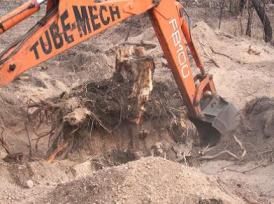We were having dinner with a friend of my husband’s last week- a forester by training, who has done a lot of work on forest carbon markets – and he was blown away when I mentioned I had just finished a book chapter on allometric equations. ‘Why would a social scientist be interested in allometric equations?’ he asked. It is a fair enough question, what, afterall, are allometric equations?
Allometric equations are a way of measuring forests, originally developed to measure timber volume, and then more recently they have migrated into forest carbon markets, to measure the carbon stored in forests. The book chapter Professor MacKenzie and I have been writing is precisely about this migration: how things used to calculate market commodities move from one market to another, the practical implications of it, and how we might best conceptualise migration. The chapter, called “Allometric equations and timber markets: an important forerunner of REDD+?”, will be published later this year in a book called The Politics of Carbon Markets (Routledge), edited by Benjamin Stephan and Richard Lane, so I won’t give away the punchline just now.
However, here is the picture that originally inspired me to start researching measurement in forest carbon markets. It was taken by a colleague of mine Dr Casey Ryan, and it is from his fieldwork in the Miombo Woodlands in Africa, and
was presented by Professor Mat Williams at the final Miombo project conference,held in Edinburgh in summer 2008. This digger is harvesting a whole tree (roots and all) in order to test the accuracy of existing allometric equation parameters for these species of trees, in this part of Africa. The sheer amount of effort involved in doing this kind of destructive tree harvest powerfully demonstrates the value of allometric equations in timber and carbon markets. Essentially they save you from doing this, and in this way make the markets work.



You must be logged in to post a comment.